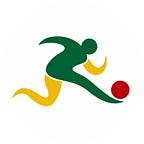Is soccer/football moving away from the homophobic stigma?
Are these small steps towards a more inclusive and non-violent culture?
The Rainbow Stadiums in Germany and Belgium
As a response to UEFA’s decision to block a planned LGBTQ+ rainbow stadium protest at Munich’s Allianz Arena, football stadiums lighted up during the Euro 2020 match against Hungary.
The Federation argued that the rainbow lights would contravene its “political and religious neutrality rules”, so the mayor of Munich illuminated a wind turbine by the ground on the opposite side of the stadium instead.
Besides that, someone ran onto the field with a rainbow flag and held it up in front of the teams during the Hungarian national anthem before the Euro 2020 game against Germany. The protester was then led away to cheers and applause.
Logos, uniforms’ numbers and social media campaigns
The U.S. Soccer Federation, The Brazilian Federation, DFB — Deutscher Fußball-Bund, Canada Soccer changed their profiles and logos to the rainbow theme on their Instagram's accounts.
And, still, I don’t think we’ve had so many clubs in Brazil manifesting at the same time against homophobia before!
I optimistically observe this movement (and share the pride spirit). At the same time, I can’t stop wondering if things are really changing or we’re getting lots of rainbow-washing events at once. I guess only time will show us.
While some female players around the world are openly proud of their identities, many others still face a lot of prejudice. The Brazilian male players avoid the number 24 in their uniforms and the clubs still ignore it — as a result of a homophobic culture.
In fact, an LGBT organization filed a lawsuit questioning the Brazilian Federation about the lack of the 24 shirt in Brazilian’s National team at the “Copa América “. Brazil was the only one in the competition without a player with this numbering.
Homophobia in Sports and Soccer/Football
The first international study on Homophobia in Sports reveals that soccer is one of the most popular sports between lesbians, bisexual, and gays athletes. Well, to be fair, the study also argues that in all countries, LGB athletes play their nation’s most popular team sports. There were 9494 participants including 2494 heterosexuals.
Language was the most common form of homophobia reported. Verbal slurs such as ‘faggot’ or ‘dyke’ were more commonly experienced than more casual forms of language such as jokes and humour. More violent forms of homophobia including physical assaults and verbal threats were also widely reported.
Participants under 22 were more likely to report personal experiences with homophobia than older participants, potentially because they are more likely to be at least partially out of the closet. 28% (nearly 1 in 3) heterosexual men also say they have been personally targeted.
The research included The US, The UK, Australia, Canada, Ireland, New Zealand, and others. While 87% of the participants witnessed homophobia, 51% declared had experienced homophobia. When it comes to youth sports, 73% of the participants believed that the environment was not safe or welcoming for LGB people.
How can we change this game?
Well, here are the top 3 solutions chosen by the participants of this study:
- You need to start early with schools, coaches and parents taking homophobia and bullying seriously in sporting environments;
- National sporting organisations need to adopt and promote clear anti-homophobia and LGB inclusion policies for professional and amateur
players; - More LGB professional sporting stars need to come out of the closet to set an example.
Of those participants who submitted other suggestions, some of the most common were:
> Educating the public through the media;
> Changing wider society to improve acceptance of LGB people;
> Ensure parents, coaches and teachers are positive role models of acceptance;
> Ongoing support and advocacy for LGB people from professional and high profile athletes.
What would you suggest?
—
Want know more about progress on this matter? Check Out on the Field’s Timeline of Responses to Homophobia and Transphobia in sport!
Credits: Natalia Lopes
